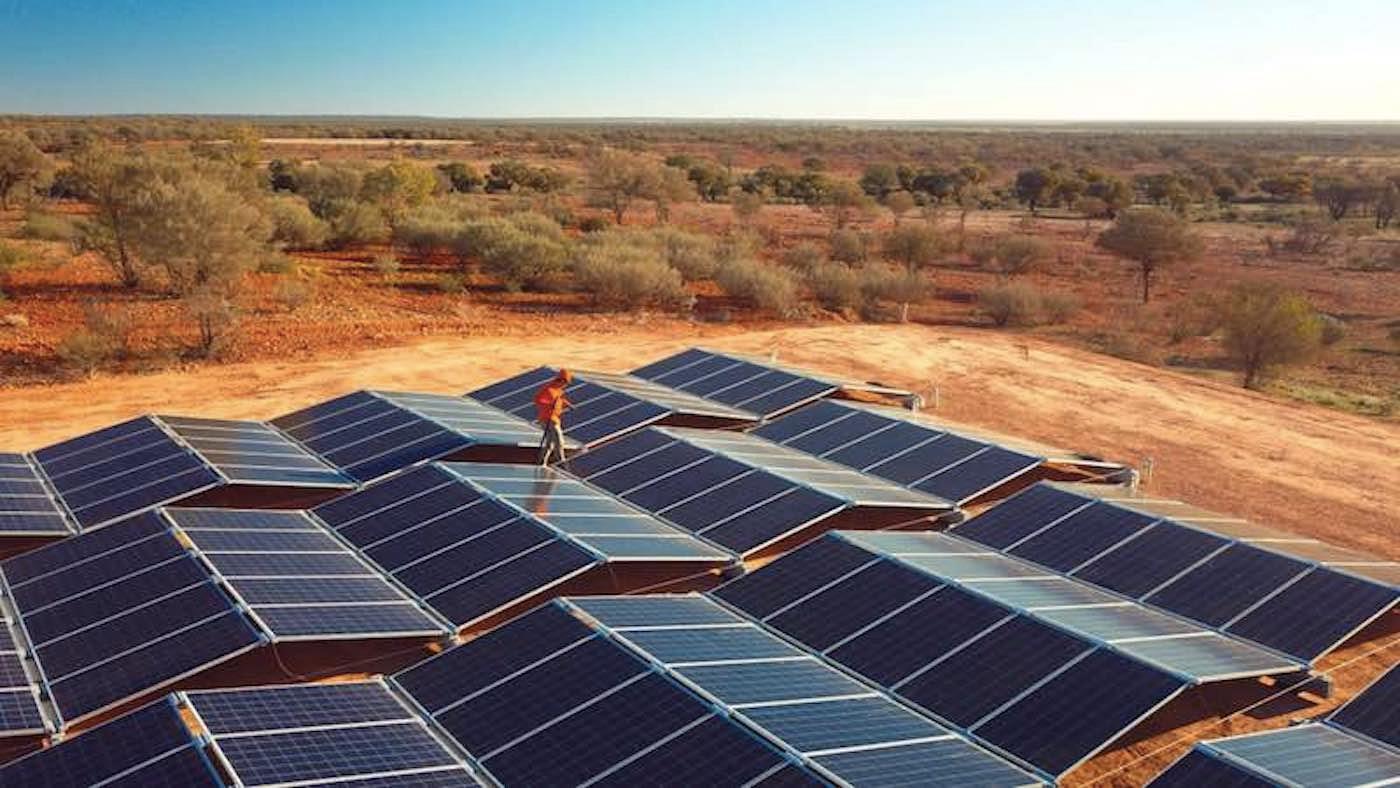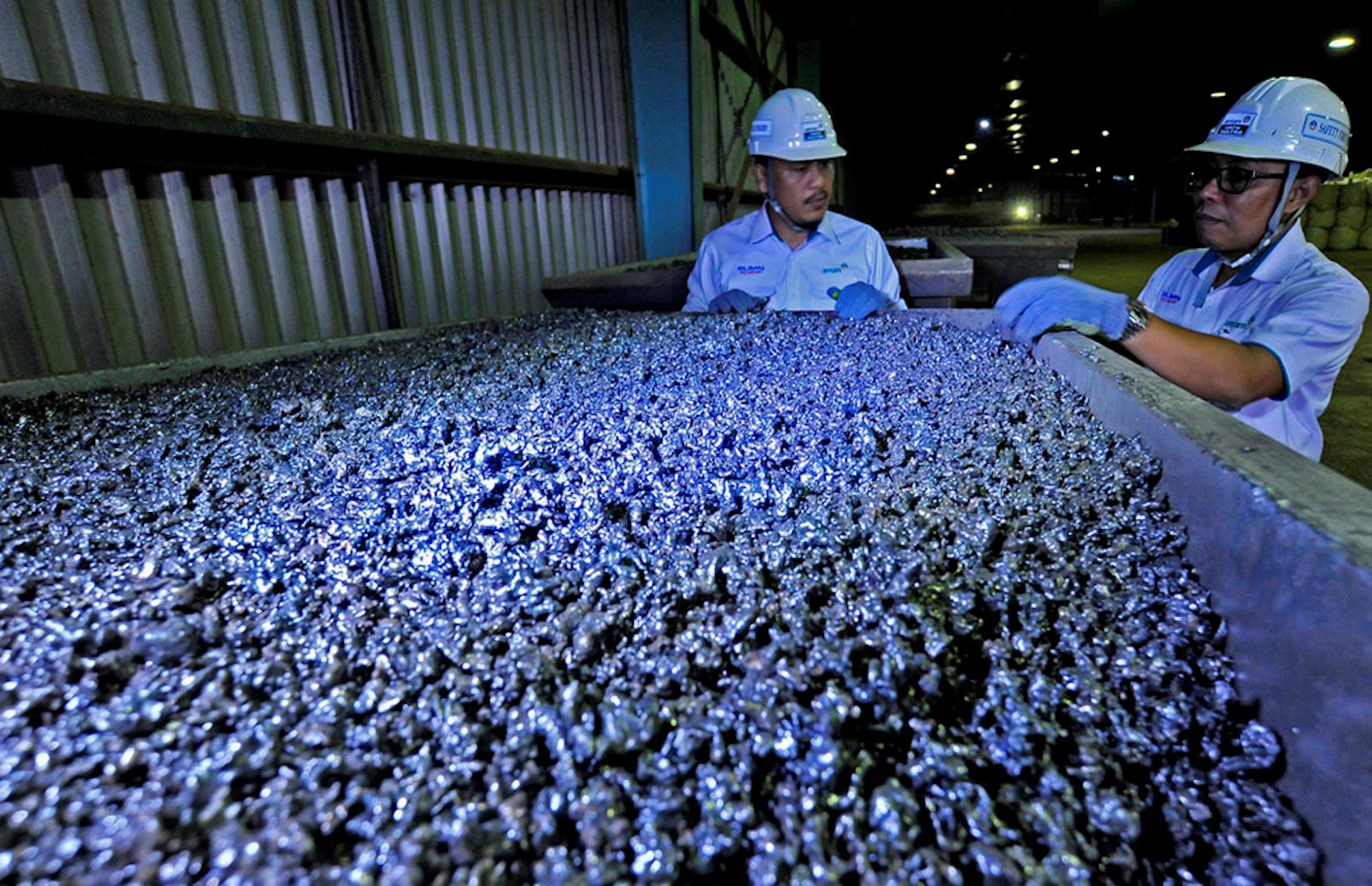(MENAFN- Asia Times) JAKARTA – Lured by the promise of US$2.8 billion in local investments, the Indonesian government has given the go-ahead for an Australian company to lay a 4,500-kilometer high-voltage power cable through Indonesian waters on its path from the world's biggest solar Farm to Singapore and perhaps beyond.
Sun Cable's $21.8 billion project, a joint venture between mining magnate Andrew Forrest and fellow tech billionaire Mike Cannon-Brookes, aims to meet up to about 15% of Singapore's energy needs, which now depend solely on natural gas, and reduce its carbon emissions by six million tonnes a year.
Perth-born Forrest, 59, founder and former chief executive of the Fortescue Metals Group, and Cannon-Brookes, 41, co-founder and co-chief executive of software company Atlassian, have a collective net worth of more than $40 billion.
Forrest made his fortune in West Australia's booming iron ore industry, but Fortescue's reported control over vast reserves of hard-rock lithium, the mineral of the future for the electric car industry, has given him a keen interest in renewable energy.
The company, which is using solar energy to power some of its operations, recently formed a partnership with PT Adaro Energy, Indonesia's largest coal company in East Kalimantan, to fast track the development of a global green hydrogen industry.
Indonesia will not receive any of the solar cable's electricity, but it will benefit from the $1 billion to be spent during the construction phase, expected to run from 2024 to 2028, and another $1.5 billion on operational costs, including a marine repair base and technological transfers.
In exchange, Sun Cable has received a development permit for the Indonesian section of the 3,750-kilometer Australia-Asia PowerLink cable through the heavily trafficked Lombok Strait and Java Sea, and expects to receive environmental clearance by 2023.
Sun Cable chief executive David Griffin says the 12,000-hectare solar farm, to be built near the town of Elliott, 400 kilometers south of the Northern Territory capital of Darwin, has been expanded to a planned 20 gigawatts (GW) with a staggering 35-42 gigawatt-hours of battery storage.

Sun Cable maintains the largest solar power farm in the world in Australia. Photo: Supplied
The Powell Creek Solar Precinct will boast 28 million solar panels, but as Griffin told the Sydney Morning Herald:“The learning rate for solar panels is relentless. It's a long way from flattening out yet. It's not a mature technology. There are still lots of efficiency gains to have.”
Originally launched as a 10GW solar and 20GWh storage project, the undertaking shows Australia's potential as a world-leading exporter of solar resources that could eventually meet a 60% growth in energy demand among mainland Southeast Asian nations.
“We are developing the technology that integrates solar, storage and High Voltage Direct Current (HVDC) transmission technologies to meet the large-scale demand for renewable energy,” Sun Cable said in a September 23 statement announcing the Indonesian agreement.
Indonesia's Mines and Energy Ministry had previously argued against the cable because officials said it would bring little value to the national economy, but that view changed after the Australians offered the necessary incentives.
Forest is also on close terms with Maritime Affairs and Investment Coordinating Minister Luhut Panjaitan after meeting with him on several occasions to discuss investing in geothermal and hydroelectric power as part of Indonesia's long-term goal of reaching carbon neutrality by 2060.
“As part of building the PowerLink, Sun Cable will drive investment and jobs in Indonesia, share knowledge and support Indonesian manufacturing,” the company said.
Indonesia hopes the project will accelerate the growth of its fledgling lithium battery industry, boosted recently by South Korea's Hyundai Motor Group and LG Chemicals breaking ground on the country's first $1.1 billion lithium-ion battery plant near Jakarta.
Those batteries will be used in Hyundai and Kia electric motor vehicles (EV), including some assembled in Indonesia, but the government says local manufacturing companies could provide as much as $600 million worth of batteries for the solar farm.
Indonesian Investment Minister Bahlil Lahadalia said in early September that foreign investors are expected to pump an additional $8.7 billion into Indonesia's EV ecosystem over the next year, including factories producing batteries, precursors and cathodes.

Lithium production in Sulawesi, Indonesia. Photo: Antara Photo via AFP
China's Tsingshan Steel, operator of the giant Weda Bay and Morawali nickel processing complexes in eastern Indonesia's Central Sulawesi and Maluku, is also planning a major lithium battery facility, ostensibly using renewable energy.
Singapore has yet to give the undersea cable the go-ahead, but the project underlines the rapid approach of a time when renewables – and solar in particular – will replace fossil fuel power plants across Indonesia and the wider region, perhaps at a faster pace than is happening now.
Singapore's Sunseap Group is planning a 2.2-gigawatt floating solar farm on a reservoir on Batam island, supplying electricity to the Batam Industrial Development Authority and Singapore. Construction on the $2.2 billion facility is expected to begin next year and will take two years to complete.
Last December, a subsidiary of state-run Perusahaan Listrik Negara (PLN) and Abu Dhabi-based firm Masdar began work on a pioneering $145 million floating solar power plant in West Java, which will sell its electricity at a competitive cost to coal.
Indonesia's national energy plan calls for 5.4GW of large-scale solar, ranging from 1.8GW on the main Java-Bali grid to 1.1GW across neighboring Sumatra. Also in the plan is 28.2GW of floating solar, located on 375 reservoirs and lakes, and 3.6GW from rooftop solar installations.
The new power cable needs to be buried deep enough in the seabed to ensure it isn't ripped up by ship anchors, as happened recently with the newly-laid Perth-Singapore fiber optic cable (ASC), which transits the Sunda Strait between Java and Sumatra.
Its deepest section, at 1,900 meters, is in Indonesia's economic exclusion zone at the approach to the shallower Lombok Strait where cables carrying power from East Java to Bali have been vulnerable to anchors dragging in the swift-flowing current.
MENAFN25092021000159011032ID1102860966
Legal Disclaimer:
MENAFN provides the information “as is” without warranty of any kind. We do not accept any responsibility or liability for the accuracy, content, images, videos, licenses, completeness, legality, or reliability of the information contained in this article. If you have any complaints or copyright issues related to this article, kindly contact the provider above.